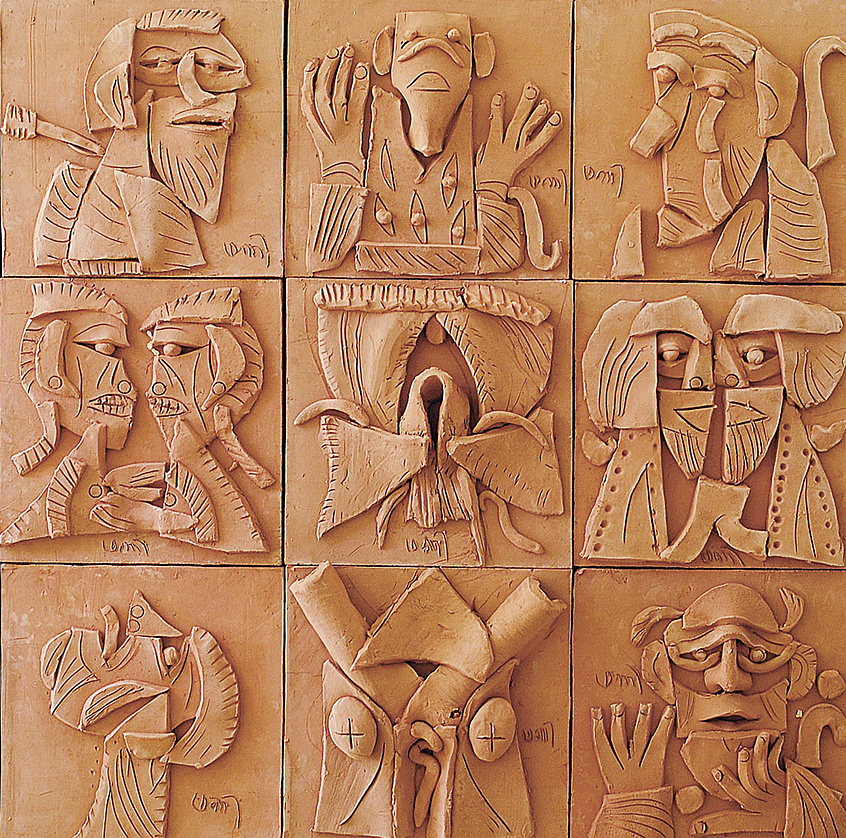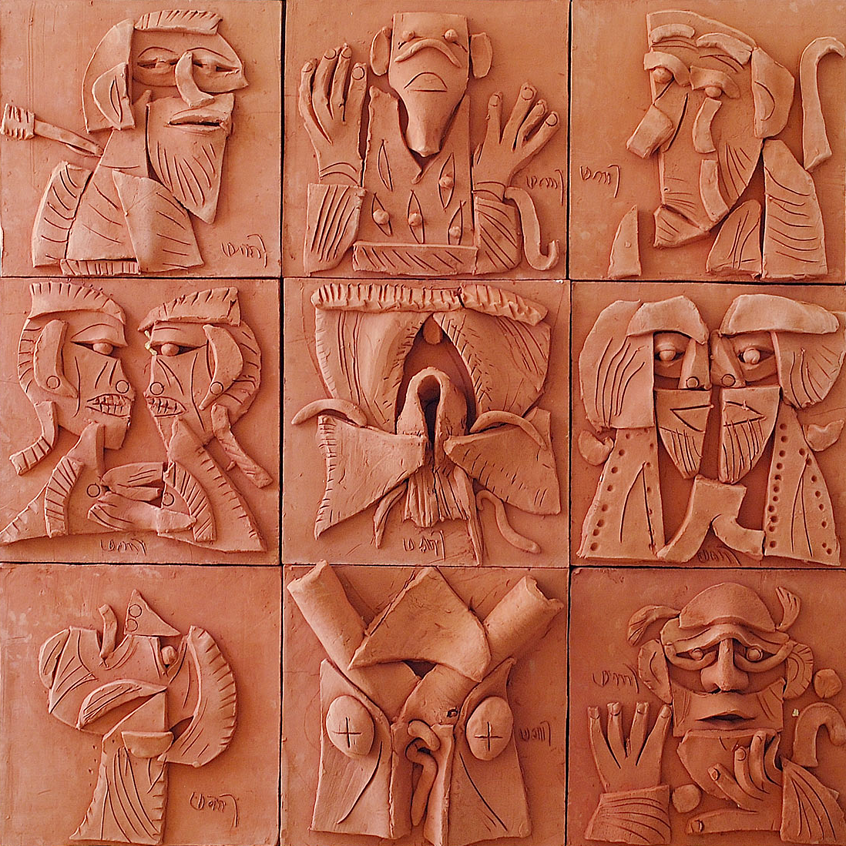Measuring 2.7 by 10.9 meters, The War of the Relics (2013)—K. G. Subramanyan’s final mural before his death in June 2016—is a rare and ambitious feat of the human spirit. Painted by an eighty-eight-year-old artist in a spurt of intense activity soon after major surgery, it is also charged with a sense of urgency.
There is, at first glance, no obvious narrative. The painting appears to be a jumble of images—heraldic motifs, icons, hybrid creatures, decorative embellishments—some familiar, some foreign, some mythical, others imagined by the artist; yet as we plough through this bewildering mass a pattern emerges, and with it a story of conflict. The chaotic composition, the motifs, and the title help us to recognize that it is a story of warring tribes, of sectarian hostilities, and religious intolerance. They also suggest that this war is being fought with medieval mindsets and modern tools, and that it is only one episode in a long, dark history of human confrontation.
This work is in many ways typical of the Kerala-born artist’s career-long engagement with the history and causes of conflict, which can be traced back to a children’s book he wrote and illustrated titled When God First Made the Animals He Made Them All Alike (1969). The fable tells how animals first created differences to beat the monotony of sameness, then fell so much in love with their disguises that they lost the ability to empathize. He returned to the theme in terracotta reliefs such as Generals and Trophies (1971) and Anatomy Lesson (2008), and paintings such as The City Is Not for Burning (1993), Massacre of the Innocents (2002), and Divided City (2002), each of which was completed in response to a conflict or civil disturbance.
A Gandhian activist before he became an artist, Subramanyan deplored violence in the name of language, culture, or religion, which he believed should serve to unite rather than divide communities. He devoted his career to interrogating why conflict persists in the world: “To assert a waning manhood? To express an inner hurt? To avenge an ancient grievance?”1 Placed against his life’s work, one sees that his anger came wrapped in love. “The best incentive for civilized living,” he argued, “can come only from loving the world.”2
—R. Siva Kumar
1 Lines from K. G. Subramanyan’s poem “Anatomy Lesson” (2008).
2 K. G. Subramanyan, interview by the author, in New Works: K. G. Subramanyan, exh. cat., Seagull Foundation for the Arts (Kolkata, 2014), p. 12.




